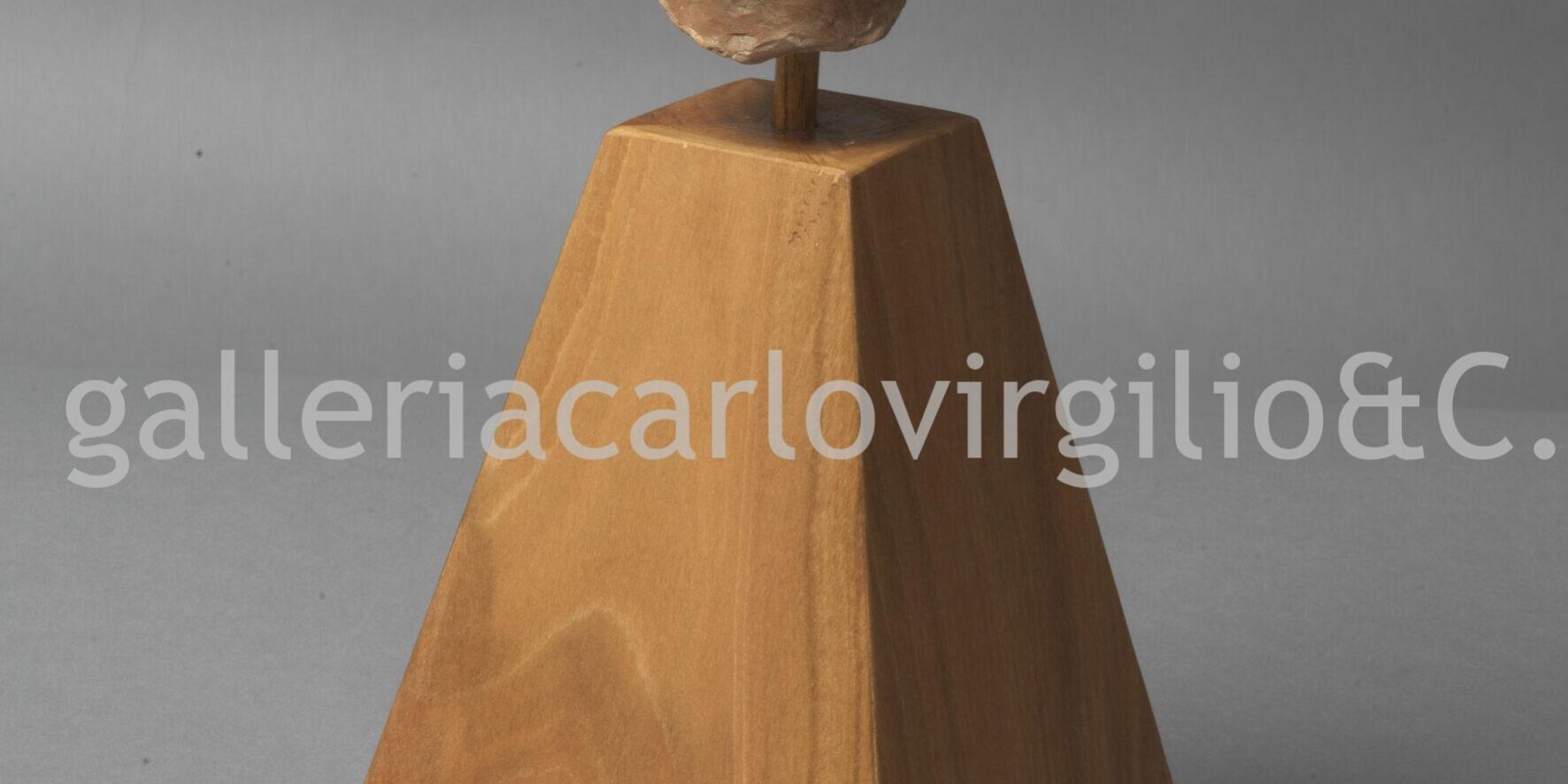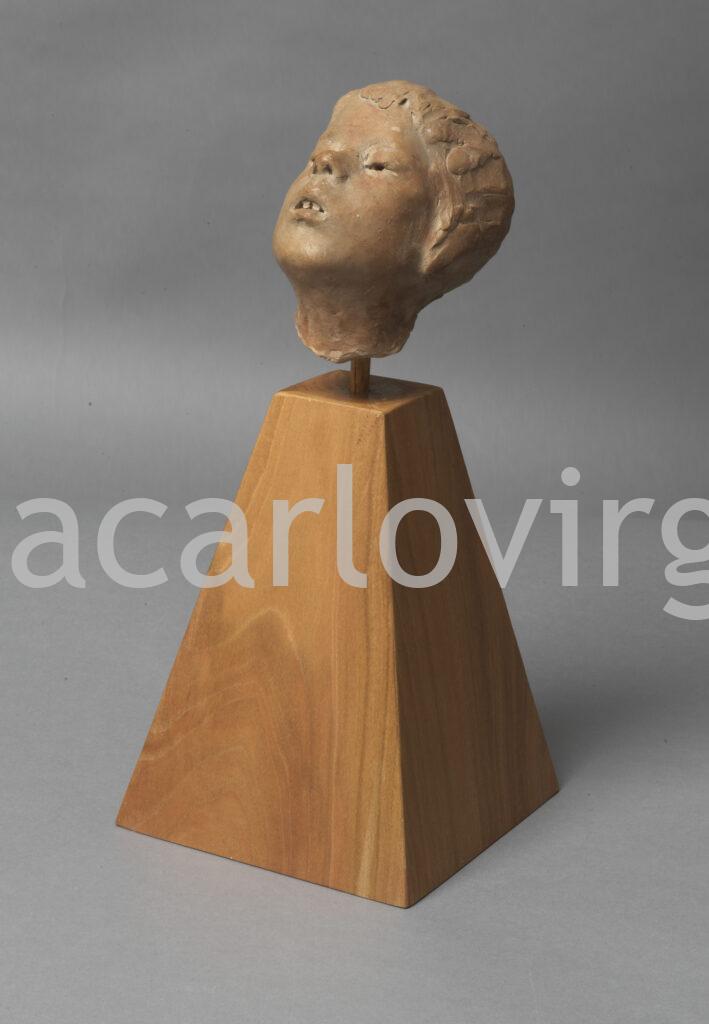| NOT AVAILABLE

Gemito Vincenzo
Naples 1852-1929
Head of a Young Boy, Piccolo Malatiello • 1870 ca.
Terracotta with slight patina, 11.5 x 9 x 12 cm
Reference bibliography: Salvatore Di Giacomo, Vincenzo Gemito. La vita, l’opera, Naples 1905; Ottavio Morisani, Vita di Gemito, Naples 1936; Alfredo Schettini, Gemito, Milan 1944; Carlo Siviero, Gemito, Naples 1953; Maria Simonetta De Marinis, Gemito, L’Aquila-Rome 1993; Denise Maria Pagano, Gemito, Electa Naples 2009; Jean Loup Champion edited by, Gemito, le sculpteur de l’âme napolitaine, Paris Musèes Paris 2019
This small work depicting the face of a boy asleep can be traced to the hand of Vincenzo Gemito, due to some stylistic features that mainly emerge in the central area of the face. While the rest of the head, addressed in a perfunctory way, suggests the work was a preparatory sketch, made by the artist in order to focus his attention on the fleeting expression of the young model, before taking on the definitive work. Validating this hypothesis are the head’s reduced dimensions, allowing the sculptor to hold it easily in his hands in order to quickly shape the most interesting features. It was made around 1870, the year in which Gemito began to work in the premises of the monastery of Sant’Andrea delle Dame, near the Academy, and gathered around him a small group of young artists seeking renewal.1 As O. Morisani states “Gemito’s work at St. Andrea delle Dame is varied and fecund” ranging “from anonymous infantile faces to the bust of Gustavo Marvasi…”2
Prior to 1872 Gemito made a series of children’s portraits, known as the Neapolitan Street Urchins, which establish his success at the Promotrici di Belle Arti in those years and are today for the most part conserved in the collections belonging to the Museo di San Martino and Intesa San Paolo – Gallerie d’Italia – in Naples. Whilst, even recently, the appearance of some small child’s heads from private collections (figg. 1, 2, 3) witness the extensive research carried out by Gemito on this theme.3 As in the case of the Head of a Young Boy (fig. 4) in red wax presented for the first time at the recent exhibition in Paris in 2019, and then in Naples in 2020,4 demonstrating the same features as the child’s head under discussion. Gemito portrays his young models with half-closed or downward eyes, as he does the lips, defined by the presence of strong chiaroscuro that can also be seen in the deep apertures of the nostrils. The hair is summarily worked and the details progressively cancel each other out in the peripheral areas of the face, until they disappear. In this way the attention is always focussed on the young model’s melancholy expression, caught in a sudden, fleeting moment. What is more, the presence of various sketches, made in small dimensions, such as the one here, shows that the attitudes of the Neapolitan children were expressly studied by Gemito and gradually perfected, setting out from the artist’s impressive ability to seize a transitory moment. This head of a young boy might be a first study for the portrait of the Piccolo Malatiello of 18705 (fig. 5), which belonged, alongside other portraits of children, to the collection of the Rotondo Brothers, who were the first to collect the sculptor’s early works in a systematic manner. According to D. M. Pagano, in this series of sculptures “the formal invention is very skilled and the expressive ability immediate. The classical references that characterize later works are not yet evident, although they affirm the immediacy and poetic vision of a daily and existential reality congenial to Gemito.”6 The Head of a Young Boy and Malatiello also share a slight patina, probably obtained with unfired clay and cement beneath a light layer of wax. This technique distinguishes Gemito’s early production and gives the work vibrant and poetic traits.
Giancarlo Brocca
1 J-L. Champion, Scugnizzi, in “Gemito dalla scultura al Disegno”, Electa Naples 2020, p. 40
2 Ottavio Morisani, Vita di Gemito, Naples 1936, p.34
3 Some sketches of child’s heads have been published in: Maria Simonetta De Marinis, Gemito,
L’Aquila-Rome 1993, tavv. 104, 270, 271 this last presents notable affinities with the work in question.
4 J-L. Champion ed., Gemito, le sculpteur de l’âme napolitaine, Paris Musèes, Paris 2019, p. 38
5 Malatiello, 1870, terracotta, 38 x 16 x 22 cm, Naples, Museo di San Martino
6 Denise Maria Pagano, Gemito, Electa Naples 2009, p. 86
[6] Denise Maria Pagano, Gemito, Electa Napoli 2009, p. 86
The Carlo Virgilio & C. Gallery searches for works by Gemito Vincenzo (1852-1929)
To buy or sell works by Gemito Vincenzo (1852-1929) or to request free estimates and evaluations
mail info@carlovirgilio.co.uk
whatsapp +39 3382427650
